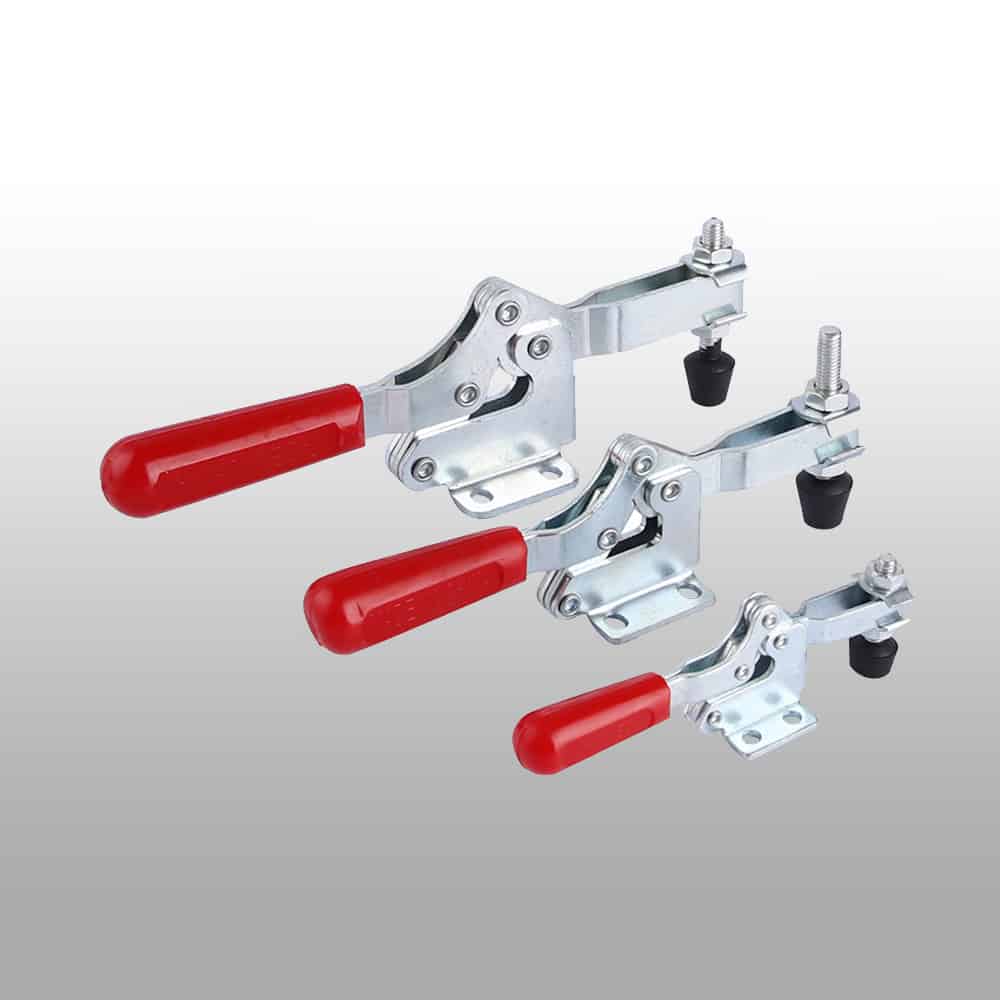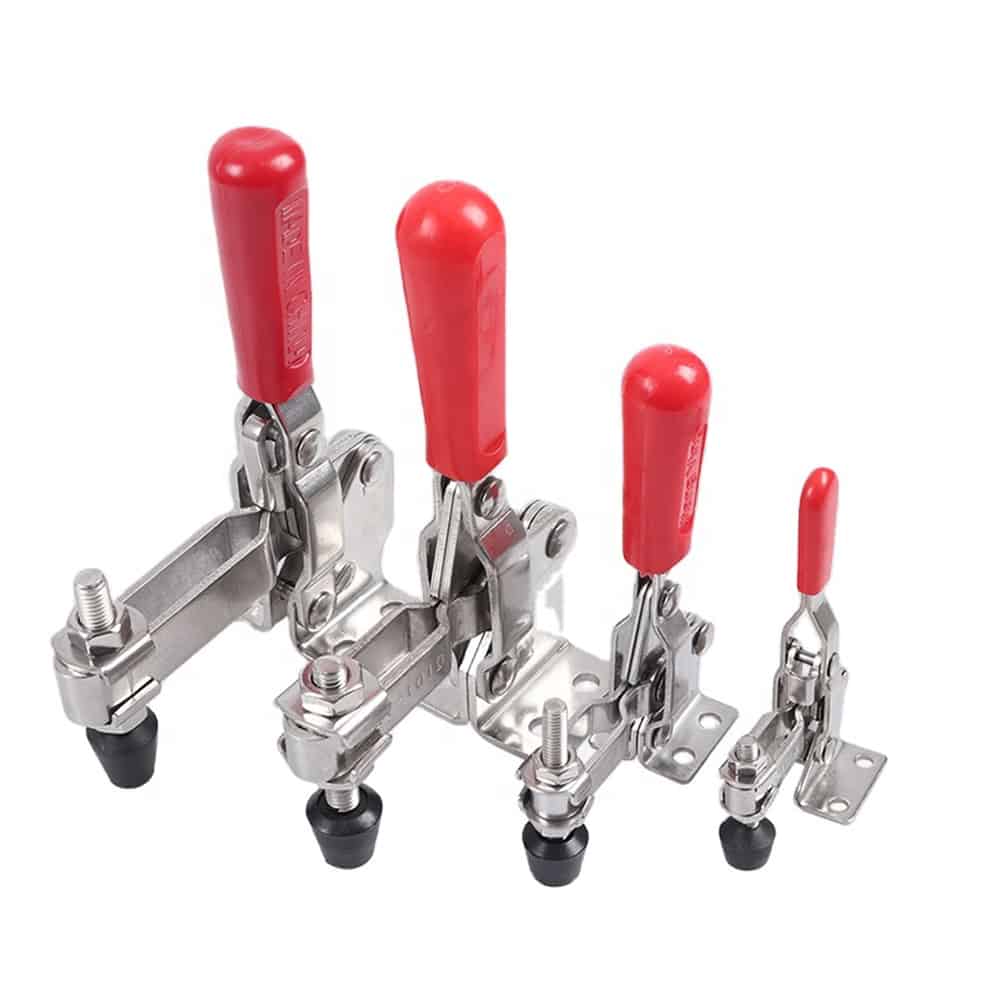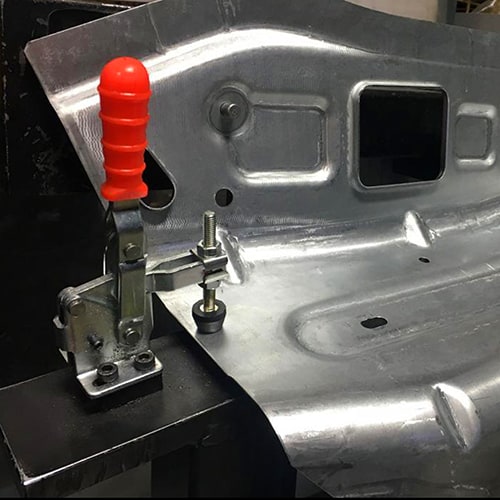Toggle clamps are widely used in various industries to hold workpieces securely in place. They are designed to generate high clamping forces with minimal effort from the user, making them ideal for woodworking, welding, and other applications. One of the key differences between toggle clamps is their orientation, with vertical and horizontal toggle clamps being the most common types. In this essay, we will explore the differences between these two types of clamps.
What are vertical toggle clamps?
Vertical toggle clamps, also known as push/pull toggle clamps, are designed to operate in a vertical direction. They are commonly used in woodworking, metalworking, and other applications where the workpiece needs to be held in a fixed position while it is being worked on.
Vertical toggle clamps consist of a plunger that moves up and down to hold the workpiece in place. When the clamp is engaged, the plunger is pushed down to hold the workpiece securely against the work surface. When the clamp is disengaged, the plunger moves up and releases the workpiece.

What are horizontal toggle clamps?
Horizontal toggle clamps, also known as push/pull horizontal clamps, are designed to operate in a horizontal direction. They are commonly used in welding applications where the workpiece needs to be held in a fixed position while it is being welded.
Horizontal toggle clamps consist of a plunger that moves back and forth to hold the workpiece in place. When the clamp is engaged, the plunger is pushed forward to hold the workpiece securely against the welding surface. When the clamp is disengaged, the plunger moves back and releases the workpiece.
Differences in application between vertical and horizontal toggle clamps
The orientation of the toggle clamp affects the type of application it is best suited for. Vertical toggle clamps are ideal for applications where the workpiece needs to be held in a fixed position while it is being worked on, such as woodworking and metalworking. They are also useful for holding jigs and fixtures in place.
Horizontal toggle clamps, on the other hand, are better suited for welding applications, where the workpiece needs to be held in a fixed position while it is being welded. They are also commonly used in other applications such as drilling, milling, and punching.

Pneumatic clamps for woodworking
In addition to manual toggle clamps, there are also pneumatic toggle clamps available for woodworking applications. Pneumatic clamps use compressed air to provide the clamping force, which allows for faster operation and greater control over the clamping force. They are ideal for use in high-volume production environments, where speed and efficiency are essential.
Pneumatic toggle clamps are available in both vertical and horizontal orientations, depending on the application. They are also available in a variety of sizes and styles, making it easy to find the right clamp for the job.

Welding toggle clamps
Welding toggle clamps are specialized clamps that are designed to hold metal pieces securely in place during welding operations. They are widely used in various industries, including automotive, aerospace, and manufacturing, where precise and secure clamping is essential to ensure accurate and high-quality welds.
Welding toggle clamps are designed to provide a strong clamping force with minimal effort from the user, making them an ideal solution for holding workpieces in place during welding operations. They come in a variety of sizes and styles, including manual and pneumatic options, to accommodate different welding applications. In this essay, we will explore the key features, types, and applications of welding toggle clamps, as well as the benefits of using them in welding operations.
In my experience, the main difference between vertical and horizontal toggle clamps is their orientation. Vertical toggle clamps are designed to operate in a vertical direction and are best suited for woodworking and metalworking applications. Horizontal toggle clamps are designed to operate in a horizontal direction and are best suited for welding applications. Pneumatic toggle clamps are also available for woodworking, providing a fast and efficient way to hold workpieces securely in place. When selecting a toggle clamp, it is important to consider the orientation and application to ensure that you choose the right clamp for the job.
